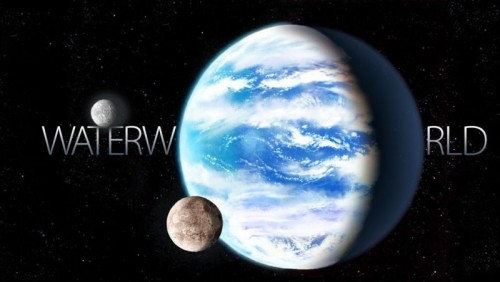Scientists say they’ve discovered a planet that could be up to half water, making it an extreme water world – although it might not be water like we know it.
The planet orbits a bright variable star called HD 106315, located about 350 light-years from our planet. It is one of two planets found orbiting the star by NASA’s Kepler telescope, one (b) orbiting in 9.5 days and the other (c) orbiting in 21.
Now, scientists led by the Institute of Astrophysics and Space Science (IA) in Portugal have worked out the masses of the planets using the European Southern Observatory's (ESO) La Silla telescope in Chile. We already knew HD 106315b was 2.44 times the size of Earth and HD 106315c was 4.35, but now we also know the former is 12.6 times more massive than our planet and the latter is 15.2 times more.
The findings are published in the journal Astronomy and Astrophysics.
From these values, the scientists were then able to work out the densities of the planets. The smaller b is 4.7 grams per cubic centimeter, while the larger c is 1.01. This suggests the latter has a thick hydrogen-helium atmosphere, but the former planet could be half rock and 9 to 50 percent water. For comparison, Earth is just 0.1 percent water.
"Thanks to an intensive observation strategy and a sophisticated data analysis method developed by our team, we were able to determine the masses of these two planets and the composition of planet b," Nuno Santos from IA, one of the study's co-authors, said in a statement.
The team were able to model the composition of planet b as it's likely rocky, whereas the other – being gaseous – was harder to do. However, they note that the planet’s proximity to its star and its subsequent high temperature of a few hundred degrees Celsius could mean the water is in a “supercritical” phase, meaning it is half way between being a liquid and a gas.
They also note that the planet might not be such a water world at all, but instead it might be a gas planet like its companion. Future observations will be required to find out for sure.
The brightness of the star could enable the planets to be relatively easily studied in the future. This is because we’ll be able to see the star’s light pass through its atmospheres, allowing us to work out what it’s made of. Future telescopes, like NASA’s newly delayed James Webb Space Telescope (JWST) in May 2020 or the upcoming Extremely Large Telescope (ELT) in 2024, will make this possible.





